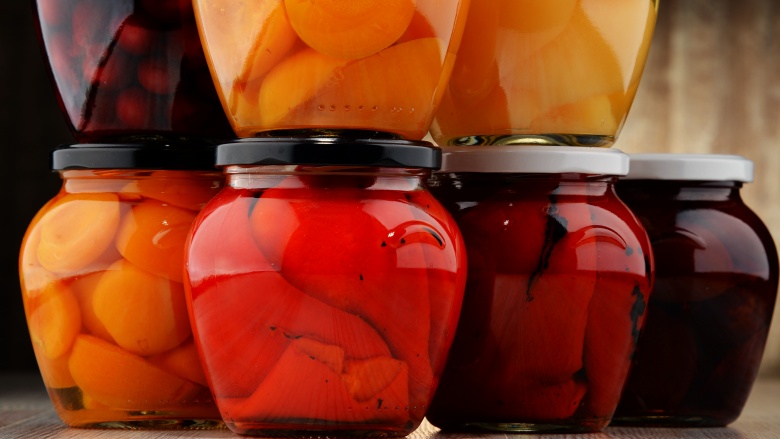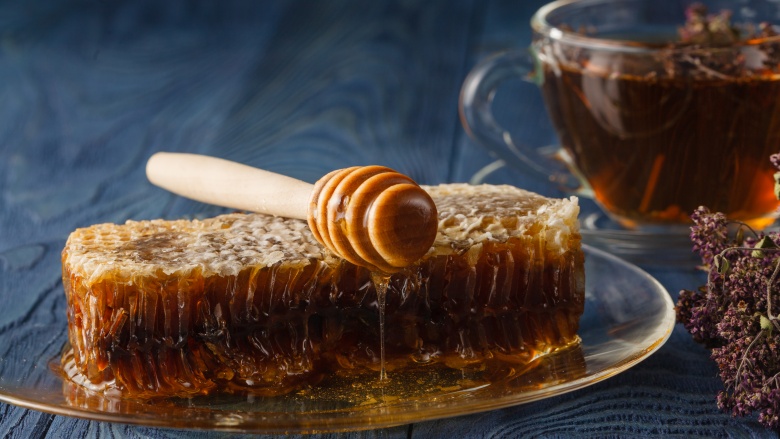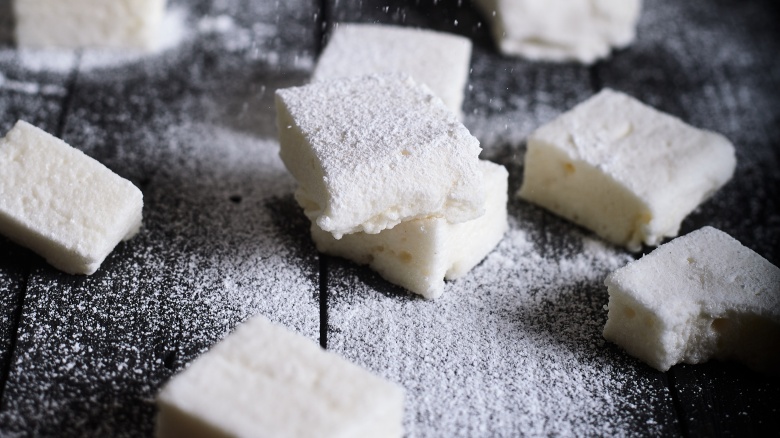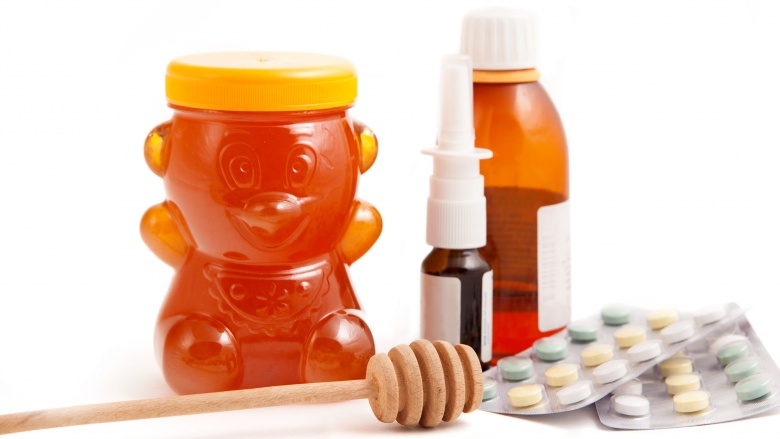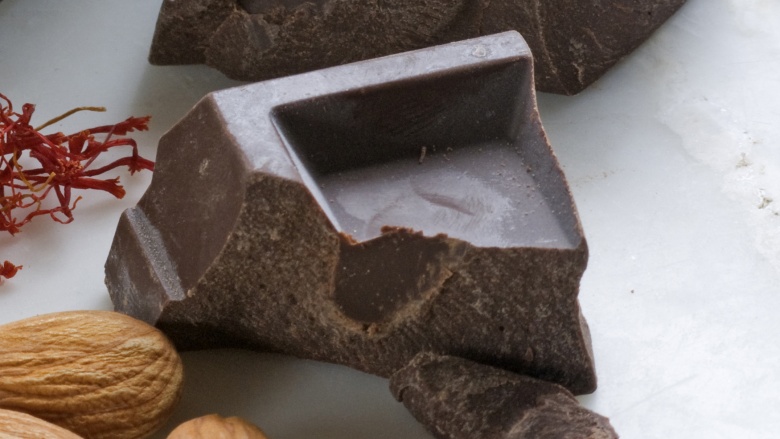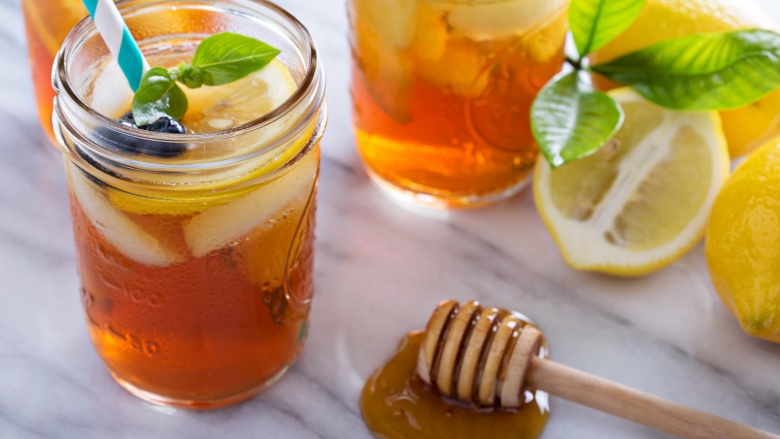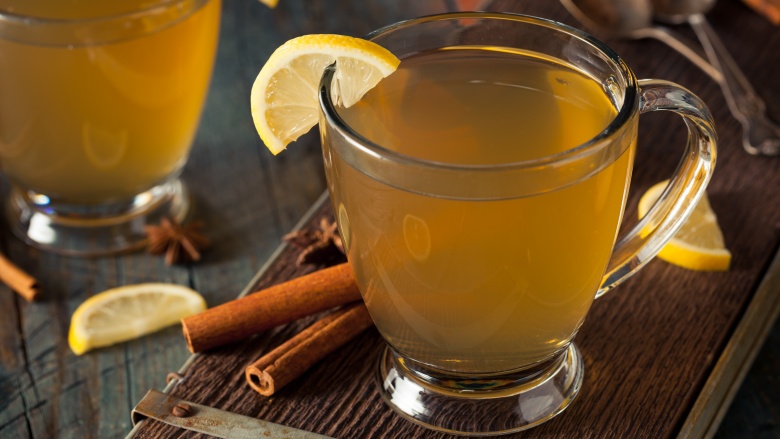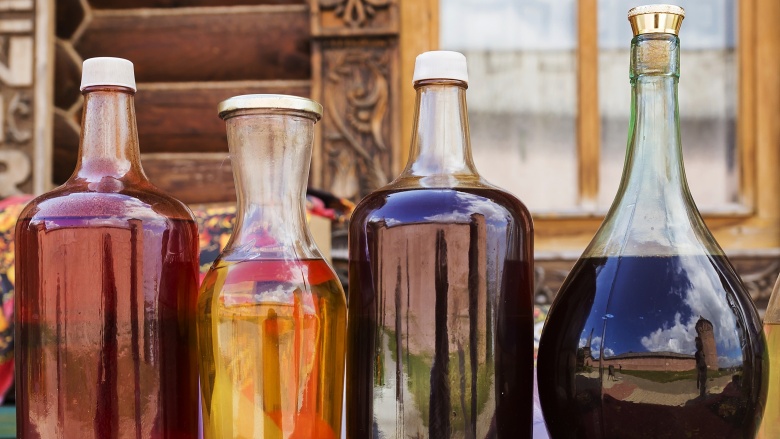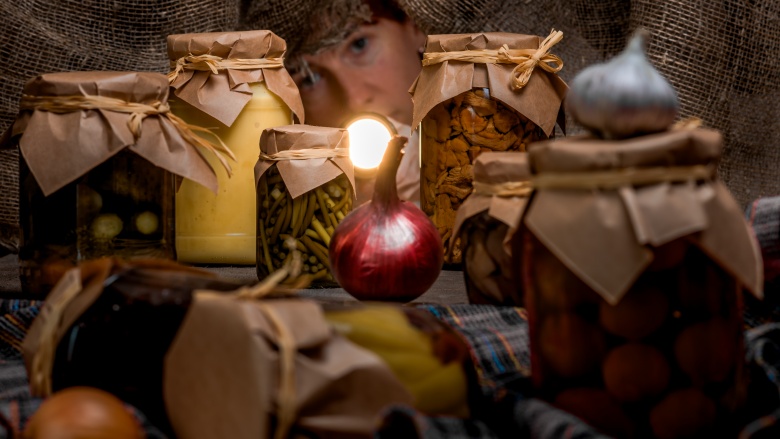Ways To Use Honey You Never Thought Of
Honey is one of the basic staples of any good kitchen, and chances are you have a few favorite ways you might use it. Drizzling it over some oatmeal, adding it to some cookies, or sweetening up your tea are all fine, time-tested uses for the sticky golden syrup. But if you can't get enough of it, then we're here for you.
Preserve your fresh fruits
The only bad thing about fresh fruit is how quickly it's gone. In most areas, the harvest season doesn't last that long, and keeping fruit fresh is challenging. You can freeze it or make it into jams and jellies, of course, but you can also use honey's infamous longevity to make a unique and tasty stash of jarred fruits that will last up to six months.
Different fruits behave differently when exposed to various processes, so experimentation is key. The blogger at Bake Then Eat shared some of her favorite recipes for the honey-based preservation of kumquats, cranberries, and physalis, and said that experiments with lemons and oranges worked, too.
The idea of using honey to preserve our fruits might look odd to our modern-day eyes, but it's a practice that goes back pretty far. One of the earliest mentions of it comes from the ancient Greek text Natural History, written by Pliny. He advises his readers on the process of using honey to preserve quince (similar to a pear), which he said could then be used to relieve stomach issues.
Cough medicine
No one likes the taste of cough medicine, and it's just one more indignity to suffer if you're already feeling poorly. Fortunately, honey might do the trick just as well as an over-the-counter cough suppressant.
If you have a sore throat or pesky cough, drinking some hot tea with a liberal dose of honey has been shown to relieve some of the scratchy discomfort that comes with cold and flu season. The Mayo Clinic also recommends mixing honey with hot water and a dash of lemon, and says that a teaspoon of honey on its own can work wonders in relieving a persistent cough. A spoonful of plain honey has been found to relieve acute coughs, and taking this wonderful dose of medicine before bedtime seems to help many people sleep better through their cold symptoms.
Homemade marshmallows
Love marshmallows but hate the list of ingredients you'll find on any commercially produced version of these amazing little sugar pillows? With only a few more natural ingredients, it's easy enough to make some healthier, homemade versions that leave nothing to chance.
The Nourishing Gourmet has done all the legwork. A winning recipe only needs a handful of ingredients, one of which is honey. Add some gelatin and vanilla (along with some water and salt), and you're done. The process might be a little complicated at first glance, but the final product is sure to be a winning treat that will satisfy any sweet tooth. The recipe is also easy to tweak by adding anything from shredded coconut to cinnamon to cocoa powder.
As an antibacterial
Honey is one of the oldest known medicinal treatments, with descriptions of its medical uses dating to at least an ancient Sumerian tablet from somewhere between 2100 and 2000 BC. Aristotle called it a wonderful medicine to relieve the pain of sore eyes. While dripping it into your eyes isn't a great idea, modern science has identified the active ingredient that makes it effective as an antibacterial.
Honey contains something called defensin-1, which provides a large part of honey's antibacterial capabilities. Combined with other things like a low acidity, honey makes the ultimate, all-natural wound healer. While surgical uses of honey have included helping to speed up the healing of major wounds and increasing the stability of skin grafts, the honey in your kitchen cabinet can be just as useful. Use it for treating minor cuts and scrapes, and even burns. There has been evidence that honey will also help in the repair of chronic, internal injuries like ulcers.
Make your own dark chocolate
Getting chocolate with just the right amount of bitterness and sweetness can be challenging, especially if you prefer dark chocolate. Fortunately, a bit of honey combined with a few other basic ingredients can be a recipe for satisfying all your chocolate cravings.
Living Healthy with Chocolate has a super-easy recipe for a honey-based dark chocolate that calls for only four ingredients: honey, cacao butter, raw cacao, and vanilla. The tempered chocolate you get as the final product is perfect for molding into bite-sized pieces, or you can drizzle the still-warm sauce over ice cream or your other favorite dessert. Because chocolate itself is so versatile, this is another recipe you can experiment with almost endlessly. Try adding a bit of chili flavor for a spicy chocolate, or a dash of mint. Note that adding ingredients will change the way the chocolate tempers, so adjustments will likely be necessary.
Get rid of canker sores
Canker sores are annoying, and they can take days to heal. Medicating them is a pain, and so is eating and drinking when you have one. Fortunately, one scientific study has indicated that honey can help get rid of them faster.
According to Prevention Magazine, a study done at Salman bin AbdulAziz University in Saudi Arabia found that regular applications of honey after meals healed canker sores in around four days. The study involved 94 different people who were assigned into three different groups in order to see if honey really worked better than other methods. It worked twice as fast as the over-the-counter plasters and corticosteroid cream used in the other groups, and those that used honey reported a major decrease in pain and discomfort, too. Using it is simple. Just clean the area with a sterile cloth and dab on some honey, three times a day. That's a win all around.
Honey jar drinks
Getting the last little bit of honey out of the jar is nothing short of impossible, but that's no reason for it to go to waste. The Sassy Radish suggests simply adding an equal amount of hot water to the honey that's left and shaking it to make a simple syrup. Food writer Melissa Clark went one step further and proposed using that mostly empty honey jar as a single-use lemonade drink.
Add some fresh lemon juice first to help loosen up the leftover honey. Then add club soda, water, and ice before putting the top back on the jar and shaking. It will make a drink so good you'll hurry to get to the bottom of the jar, and you can get even more creative by adding other flavors, like a splash of cranberry juice, some mint, or a few strawberries.
Stir up a hot toddy
The hot toddy is a wonderfully warm alcoholic drink that's more popular on the British and Irish side of the Atlantic than on the American one, but everyone who settles down for a beverage on a cold winter's evening needs to try one. The great thing about the hot toddy is that there's no one right way to make one, so you're free to experiment and see what combination of flavors you like best. There are, however, some general types of ingredients that you'll need to add.
Honey is one of those ingredients, and no matter what else you choose to add, most hot toddies feature honey to provide a much-needed sweetness. That is balanced with sour, usually in the form of lemon juice or a slice of lemon. Spices give it an extra kick, and traditional choices include ginger, nutmeg, or a cinnamon stick.
Then there's the base liquid, which is going to be the majority of your drink. Plain hot water is one of the traditional choices, but you can also spice it up with tea (regular or flavored) or hot cider. Your alcohol is another way you can mix and match your hot toddy into something unique, with bourbon often substituted for the more traditional whiskey. If you want to really bring out the flavor of the honey you added, try a honey whiskey.
Making mead
This will take a little more honey than what you have sitting in your kitchen cupboard, but if you're a fan of offbeat alcoholic beverages, you might try making your own mead. Mead has been around for ages, and its use predates our written history. King Tut is said to have been a fan. There are a whole bunch of names for it, from the Norse "mjod" to "the nectar of the gods." Mead fell out of fashion a bit with the rise of wine, but you can still ferment a batch right in your kitchen.
It doesn't take much, aside from a lot of honey. The most basic meads require only three ingredients: honey, water, and yeast. The American Homebrewers Association has an excellent guide on how to get started, what equipment you'll need, and the basic steps involved. Because the sweet flavor of honey pairs so well with so many other flavors, there is no end to the different types of mead you can make. When you get your methods down, you can try anything from berry mead to spicy chili mead.
Survivalist gear
For all of these uses (and more), honey is a great thing to quite literally stick in the back of your pantry for a rainy day ... and that's exactly what you should do. You don't have to be a doomsday prepper or survivalist to have some basic survival supplies ready. It could be anything from a week-long power outage to just being trapped inside after a snowstorm, depending on where you live.
Honey keeps almost indefinitely, and that means you can pick up a bottle at the store, add it to your pantry, and forget about it. In emergency situations, it can provide a much-needed nutritional boost that you don't need to worry about cooking or otherwise preparing. As long as the jar is kept sealed, it'll be there when you need it.

